The "hot big bang" theory is the standard model of cosmology. It began as an interesting hypothesis that would explain the expansion of the universe that Albert Einstein unintentionally predicted with his general model of relativity in 1916. Then in 1929 Edwin Hubble discovered that the strange, whirlpool-shaped patches of light, which other people had taken for clouds of gas and dust, were actually huge galaxies of stars like our own Milky Way. Moreover, Hubble discovered that these galaxies were all rushing away from each other at great speeds. In the meantime, physicists were still grappling with Einstein's predictions. Solution: the universe is expanding. And if the universe is expanding, then at some point it must have started expanding. This event came to be known as the "big bang." Since then, the hot big bang model has made a number of successful predictions and passed a number of experimental tests, earning its place among physical scientists as a universally accepted theoretical model.
The universe, according to this model, began in a state of inconceivably huge energy and density. Imagine the entire universe; now imagine a mathematical point. Now imagine the entire universe packed into this mathematical point. 13.7 billion years ago something went "bang" (what, and how, is still a mystery) and the universe has been expanding ever since. As space itself expanded, however, the amount of matter/energy in the universe remained constant. (E=mc^2 says that matter and energy are essentially the same thing.) What began as an extremely hot and dense "singularity" expanded and cooled to become the cosmos that we are familiar with today. Thus the hot big bang theory predicts that the universe has undergone some dramatic changes during the past 13.7 billion years. Cosmologists gather evidence of these changes to unravel the history and evolution of the universe.
[Yuan Hou's page on the Expansion of the universe]
Flat and critical
Observational evidence indicates that the universe is pretty flat. Its density continues to hover near the critical value of one, which means that there is not so much matter that the force of gravity will eventually pull it back together and cause the universe to contract. On the other hand, there does seem to be too much matter to allow the universe to continue expanding forever. A universe at critical density would also continue to expand, but at ever-decreasing rates so that cosmic expansion would slow down and almost (but not quite) appear to stop. The geometry of such a universe is said to be flat. Space-time isn't curved like the surface of a sphere or a saddle, and parallel lines remain parallel even on very large scales.
This is all fine and good; indeed, many physicists have admitted the aesthetic value of a nice, flat universe with a critical density value at unity. Such a universe is not fated to end in some unpleasantly sounding "heat death," when the energy density of an open universe becomes so low that nothing interesting ever happens anymore, or unpleasantly sounding "big crunch," when a closed universe finally contracts into something like a big bang in reverse. But why should a flat universe be the case? In order for the density to be critical today it would have to have been very, very close to the critical value when it began. Had the universe started out slightly differently it would have produced a universe vastly different from the one in which we now live. Out of all the possible universes, what reason do we have to assume we live in a special one with a density that has always been "just right?" Yet that is exactly what is observed, and the standard cosmological model--the "hot big bang" theory--does not account for this observation.
[Nick Bower's page on the Topology of the universe]
On the horizon
The universe is also homogenous, which means that its matter is distributed evenly, and isotropic, which means that this evenly distributed matter looks the same in any direction. The standard model actually assumes that the universe is homogenous and isotropic, yet this in fact represents a crucial and nagging flaw in the hot big bang theory known as the "horizon problem."
The horizon problem goes like this: The cosmic microwave background (CMB), the "afterglow" of the big bang, is homogenous and looks the same in all directions. When we observe the CMB we're actually observing photons that have been travelling freely through space since the universe became cool enough for atoms to form--380,000 years after the big bang. These background photons have been zipping through the universe for 13.5 billion years and define our observational "horizon." (Anything beyond the horizon happened when light was caught up in electromagnetic reactions between free protons and electrons, making the universe opaque.) The CMB in one region of space 13.5 billion light years away looks pretty much the CMB in another region of space 13.5 billion light years away. This suggests that these two regions of space were once close enough to each other for a long enough period of time that the matter/energy in one region could interact with the matter/energy in another region. As a result, the CMB would be uniformly distributed in all directions, even as the universe continued to expand.
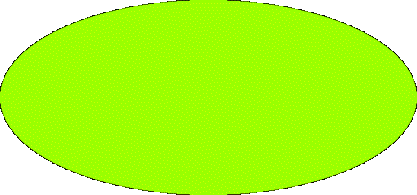
According to the standard model, however, different regions of space would never have had enough time to "communicate" with each other in this fashion, even very early in the universe's history. The speed of light places an upper limit on how fast information can travel from one place to another. If the universe expanded from a hot big bang in the way that we now observe, then there would have been no time for such an exchange. Space would be flying apart faster than light from one region could reach another region. So there is no reason to suppose that one part of the universe looks like any other, yet this is exactly what we observe.
[Katie Heupel's page on the Cosmic Microwave Background]
Otherwise there was no reason to completely abandon the hot big bang theory. The "steady state" model of the universe could easily explain the homogeneity, isotropy, and flatness of the cosmos. (Sir Fred Hoyle, developer and proponent of steady state cosmology, actually coined the term "big bang" as a derogatory nickname; somehow it caught on.) Matter, according to the steady state theory, is created as space expands, with the result that the universe's density always remains constant. The cosmos has always been, and will always be, in exactly the same state that we now observe. The steady state model, however, does not explain why the universe should expand in the first place and cannot account for the existence of the CMB. By contrast, the hot big bang theory successfully predicts and explains these and many other phenomena. Thus it became the standard model of cosmology, though it still needed a little "tweaking."

Enter Alan Guth, a young and obscure physicist doing post-doctoral research at Stanford University in early December of 1979. He had pondered the universe's problematic near-flatness and the connections between particle physics and astrophysics for about thirteen months when he suddenly had an idea. Several calculations and hours of sleep later he wrote "SPECTACULAR REALIZATION" across the top of the page. This remarkably neat notebook is now on display in the Pritzker Cosmology Gallery at the Adler Planetarium in Chicago, and Alan Guth is now quite famous in cosmology circles. So what did he realize that was so spectacular?
New, improved, and testable
Guth proposed that very early in its history, when it was only 10^(-37) seconds old, the universe suddenly began to expand at an exponential rate. In other words, as time passed by the universe grew even larger even faster as its rate of expansion increased. It very rapidly exploded in size by 25 orders of magnitude when suddenly, just 10^(-34) seconds later, this period of "inflation" (as Guth called it) came to a halt. It's comparable to watching a pea become the size of a galaxy in an instant. After the inflationary era the universe continued to expand, but its rate of expansion remained comparatively steady for the next 13.7 billion years.
The theory of inflation provides a nice solution to the puzzles of the standard cosmological model, the horizon problem and the universe's apparent flatness. Recall that the homogeneity and isotropy of the cosmos led to an interesting paradox: different regions of space would not have had ample time to "communicate" with each other and produce the uniform distribution of matter and energy that we observe in all directions today. According to inflationary theory, however, the universe's expansion would have started out at a slow enough speed to allow matter/energy to interact throughout all of space. Thus the early universe had already been homogenized when inflation began and space itself expanded wildly. Inflation resolves the flatness problem simply by making the universe so gigantic that its geometry will always appear to be flat. The earth, for example, looks pretty flat when you're standing on it. Inflationary theory spares cosmologists the uncomfortable assumption that we exist in a special era of almost-critical density in the lifetime of the universe. According to inflationary theory the cosmos just happens to be that way.
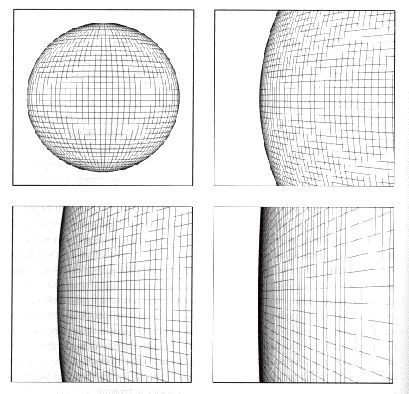
Inflationary theory makes several basic predictions and has stood up very well to testing. We have seen how critical density and flat geometry are important consequences of cosmic inflation, and that these have been observed. Scientists can test inflation's predictions by observing the CMB. Although this background radiation from the early universe is remarkably uniform in all directions, tiny differences in its energy can be detected at high resolutions. The Wilkinson Microwave Anisotropy Probe (WMAP) is the most recent instrument to do just that--across the entire sky. The results produced a detailed picture of the CMB showing these energy fluctuations at very small angular scales. The intensity of these fluctuations is related to the angular sizes of the space observed; a graph of this relationship is called the "power spectrum" of the CMB. Inflationary theory predicts a flat universe, and a flat universe predicts that these fluctuations should be greatest on a one-degree scale. This is what WMAP found, confirming the flatness of the cosmos and providing evidence in support of inflation. But how did inflation happen?
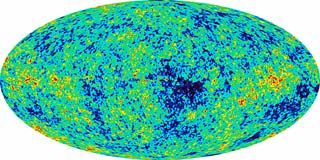
Vacuum--true or false?
Inflationary theory helps bridge the gap between the unbelievably tiny and the truly enormous, bringing particle physics into the realm of cosmological research. A key to inflation is the idea of a "false" vacuum. First, envision a "true" vacuum, which is absolutely nothing--no energy, no matter. This vacuum, this nothing, however, is actually a whole lot of something. Due to the quirks of quantum mechanics a vacuum is really a teeming froth of particles and antiparticles popping into existence and then annihilating each other. In a true vacuum the energy states of these so-called "virtual" particles add up to zero. So while a true vacuum may indeed be something other than nothing, it still does not have any energy in it. In a false vacuum, however, the combination of energy states has a nonzero value. So a vacuum, an area of the universe at its lowest energy state because it is completely devoid of any matter or radiation, could still have some energy associated with it. The value of this energy is called the cosmological constant.
If the cosmological constant is positive then it provides a force that can overcome gravity and cause massive particles to repel each other. This is a likely candidate for the mysterious "dark energy" that makes up 73% of the matter/energy in the universe and drives its observed current acceleration. Strangely, the density of this vacuum energy does not decrease as space grows larger in volume. (This really does make sense, though, since the cosmological constant is the energy of empty space itself.) During the inflationary era this vacuum energy dominated the universe and caused it to expand exponentially. After 10^(-34) seconds, however, the universe had become sufficiently cool for its energy state to change--it underwent a phase transition. Then things got really interesting.
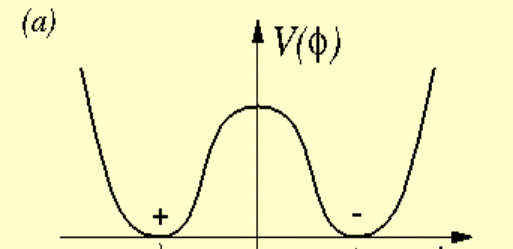
Cosmologists describe this vacuum energy in terms of a "scalar field." Picture a weather map that shows the current temperatures in many different cities. Each location on the map has its own temperature value. Similarly, the universe's vacuum energy can be represented by assigning a value for this energy for all points in space (either "real" space or the conceptual space represented by axes of a graph). Because of quantum mechanical factors the vacuum's potential energy had slightly different values in different parts of space. This was the source of the tiny temperature fluctuations in the CMB. As space expanded these perturbations in the energy density became stretched, although their amplitudes did not change.
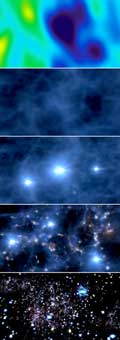
Inflation ended when the cosmological constant dropped to a lower value. The energy perturbations were "frozen" into the fabric of spactime and became the seeds of galaxy clusters. Matter began to dominate the universe and gravity pulled it together around areas of greater density, gradually forming clumps that became galaxy clusters. The minute temperature fluctuations in the CMB represent the initial perturbations in the vacuum energy while the large-scale structure we observe in the universe is what they eventually became. Inflationary theory provides a mechanism for these perturbations, which the standard cosmological model was at a loss to explain on its own. Although not an intended feature of Guth's original model, this crucial consequence of inflation became one of its most successful predictions when these energy fluctuations were observed in the CMB.

[Bill Gunn's page on Particle
Physics and Cosmology]
[Ben Johnson's page on Dark Energy]
[Emily Gorman's
page on the Acceleration
of the universe]
[Gannon Long's page on Phase
Transitions]
[Brad Heffern's page on Large
Scale Structure of the universe]
Like ice cream and quarks, there are different flavors of inflationary theory. Like a species experiencing natural selection, the general theory of inflation has evolved since Guth came up with the idea that made him famous. New calculations, experiments, tests, and discoveries increase the body of knowledge about the universe. Some theories fail and are discarded, others prove themselves successful and are further developed, and new ones are proposed in light of new information. Nearly everyone working on inflation has her or his own favorite version of the theory. Three key models, however, "old inflation," "new inflation," and "chaotic inflation," have received a lot of attention.
Alan Guth's not-so-spectacular realization
"Old inflation" is the original form of the theory that Guth introduced in 1981. According to the old inflation model a point in the universe would have to "tunnel" from a higher energy state to a lower one as the phase transition took place. Tunneling is a quantum mechanical process whereby a particle instantly penetrates a potential energy barrier and breaks free from whatever force kept it bound to another particle. It would be like suddenly finding yourself in interstellar space, far from the influence of Earth's gravity. Such a notion is preposterous according to the rules classical physics (and luckily we are macroscopic beings to whom those rules apply), but in the quantum mechanical world of subatomic particles this sort of thing happens every day.
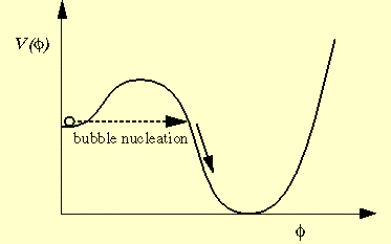
Tunnelling, however, is a completely random process. The problem with old inflation (which Guth acknowledged in his original paper) was that some parts of the universe would randomly tunnel to a lower energy state while others, blocked by the potential barrier, would continue to sit at the higher one. The fabric of spacetime would expand and these energy states would become pre-galactic clumps of matter, but the matter/energy density of such a universe would be far less homogenous than the one we observe today. In other words, it was a theoretical disaster. Modified versions of the theory were then presented by Andrei Linde, Paul Steinhardt, and Andreas Albrecht (the latter two published together), which became known as "new inflation." Their models resembled the potential energy curve already shown above--no tunneling required. Mathematically refining this model so that it accurately represents the universe, however, has proven quite a challenge.

Chaos, and more chaos
Life may have been chaotic enough for Linde, a Russian physicists who learned in 1986 that scientists and scholars in the Soviet Union had been prohibited from publishing anything abroad. Then one day he suddenly received an invitation to lecture on cosmology in Italy--with less than a day to prepare anything. Luckily he had already introduced "chaotic inflation" in 1983 as yet another inflationary flavor. He proposed that the scalar field driving the inflationary process need not have started at any one initial value. Instead, different areas could have randomly started out with different potential energy values an expanded accordingly. The big bang didn't need to be hot; in fact, it didn't even need to "bang." Our own particular universe could have simply sprouted from one of these regions. In Italy he lectured on his theory of the "eternally self-reproducing universe," describing how these changes in initial conditions would continue produce new and different universes. It seemed like a great idea and even came to be referred to as a "textbook example" of inflation. The recent WMAP results, however, have ruled it out. (Chaotic inflation also produced far too many gravity waves, but that's another story...)
An award-winning theory
It's been said that inflation is a "theory without a model." It is a plausible theory that has made many successful predictions, but the details of the mathematical model will take some time to work out. However, to recognize their contributions to physics in developing this powerful theory, Alan Guth was awarded the 2001 Benjamin Franklin Medal in physics and Andrei Linde, Alan Guth, and Paul Steinhardt were all awareded the 2002 Dirac Medal in theoretical physics. It's possible that the Nobel Prize in physics will one day be awarded to someone for work on inflationary cosmology.

Astro
18200: The Origin and Evolution of the Universe (Winter 2003)
Wilkinson Microwave Anisotropy
Probe--Cosmology
How
It All Began (from Astronomy magazine online)
Guth's Grand Guess (from
Discover magazine)
Ned Wright's Cosmology
Tutorial
Inflation for
Beginners
The
Inflationary Universe
MAP Media
Resources--Animations (nifty QuickTime movies about WMAP and the CMB)
Ferris, Timothy. The Whole Shebang: A State of the Universe(s)
Report. New York: Touchstone, 1997.
Gilmore, Robert. Alice in
Quantumland: An Allegory of Quantum Physics. New York: Springer-Verlag New
York, Inc., 1995.
Greene, Brian. The Elegant Universe: Superstrings,
Hidden Dimensions, and the Quest for the Ultimate Theory. New York: Vintage
Books, 1999.
Nadis, Steve. "Cosmic Inflation Comes of Age." Astronomy
28(4): 27-32. (April 2002.)
Nadis, Steve. "Inflation Minifeatures."
Astronomy 28(4): 36-40. (April 2002.)
This is Miss Davis